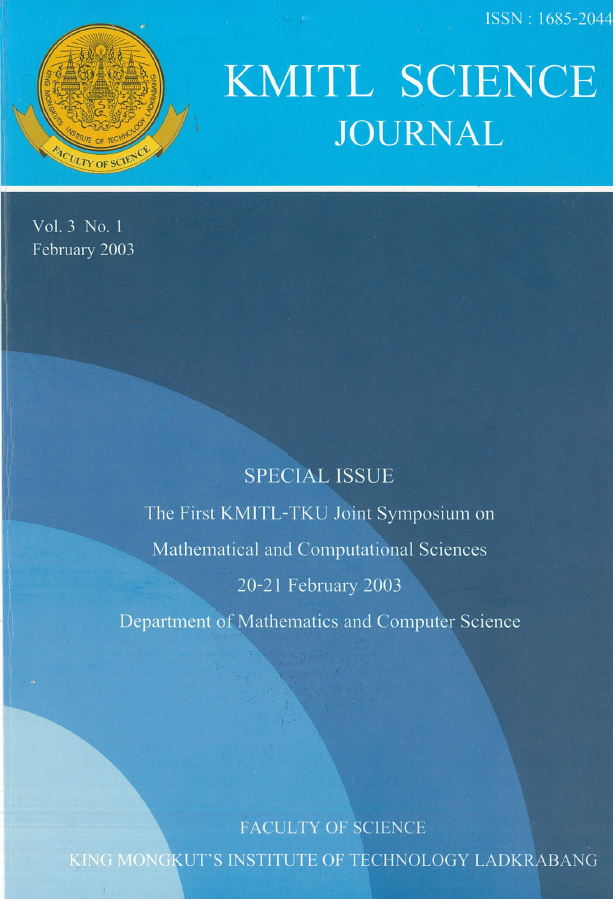On Synchronization Queues
Main Article Content
Abstract
This paper considers synchronization queues (or synchronization nodes) with two input flows and finite or infinite buffers. There is one flow of tokens for each buffer, called a stream. Each stream is assumed to be a point process with finite intensity. Tokens are held in the buffer until one is available from each flow and a group-token is instantaneously released as a synchronized departure. In this paper, we review the system state and the output processes of synchronization queues.
Keywords: Synchronization queues, output process, Markov renewal process, matrix analytical method, phase-type distribution, point process, rate conservation law.
E-mail: cast@kmitl.ac.th
Article Details
Copyright Transfer Statement
The copyright of this article is transferred to Current Applied Science and Technology journal with effect if and when the article is accepted for publication. The copyright transfer covers the exclusive right to reproduce and distribute the article, including reprints, translations, photographic reproductions, electronic form (offline, online) or any other reproductions of similar nature.
The author warrants that this contribution is original and that he/she has full power to make this grant. The author signs for and accepts responsibility for releasing this material on behalf of any and all co-authors.
Here is the link for download: Copyright transfer form.pdf
References
[2] Baccelli, F., Massey, W.A. and Towsley, D. (1989). Acyclic fork-join queueing networks, J. of A.C.M. 36, 615-542.
[3] Hopp, W.J. and Simon, J.T. (1989). Bounds and heuristics for heuristics for assembly-like queues, Queueing Systems 4, 137-156.
[4] Latouche, G. (1981). Queues with paired customers, Journal of Applied Probability 18. 684-696.
[5] Lipper, E.H. and Sengupta, B. (1986). Assembly-like queues with finite capacity: bounds, asymptotic and approximations, Queueing Systems 1, 67-83.
[6] Miyazawa, M. (1983). The derivation of invariance relations and their applications, Advances in Applied Probability 15, 874-885.
[7] Miyazawa, M. and Yamazaki, G. (1992). Relationships in stationary jump processes with countable state space and their applications to queues, Stochastic Processes and their Applications 43, 619-630.
[8] Neuts, M.F. (1981). Matrix-Geometric Solutions in Stochastic Models, The John Hopkins University Press, Baltimore, Maryland.
[9] Ꝺsawa, H. (2001). On output processes of synchronization queues, International Transactions in Operational Research 8, 193-201.
[10] Prabhakar, B., Bambos, N. and Mountford, T.S. (2000). The synchronization of Poisson processes and queueing networks with service and synchronization nodes, Advances in Applied Probability.
[11] Som, P., Wilhelm, W.E. and Disney, R.L. (1994). Kitting process in a stochastic assembly system, Queueing Systems 17, 471-490.
[12] Srivastava, H.M. and Kashyap, B.R.K. (1982). Special Functions in Queueing Theory and Related Stochastic Process, Academic Press.
[13] Takahashi, M., Ꝺsawa, H. and Fujisawa, T. (1998). A stochastic assembly system with resume levels, Asia-Pacific Journal of Operational Research 15, 127-146.
[14] Takahashi, M., Ꝺsawa, H. and Fujisawa, T. (2000). On the synchronization queue with two finite buffers, Queueing Systems 36, 107-123.


